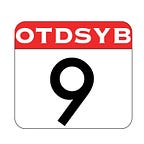Adoption of the Gregorian Calendar
Considering the fact that there is a day and night cycle literally everyday, the moon goes through its phases every month, and the seasons change every year, and all of this is plain to see, organized calendars haven’t really been around very long.
Today is October 15, 2017, and on this date, 435 Years Back, in 1582, the Gregorian Calendar was adopted by the Catholic Church.
Prior to the adoption of the Gregorian Calendar, the Julian Calendar was the standard for the western world. Named for Julius Caesar, who mandated its implementation in 45 BCE, the Julian Calendar consisted of 365 Days, divided into 12 months, and included a leap day every fourth year. However, a small imperfection in this calendar caused it to gain three days every 400 years. Needless to say, this made things confusing for its users.
This is why, more than 1600 years, and twelve extra days later, Pope Gregory XIII implemented the revised Gregorian Calendar, which corrected the issue of extra days. Very little changed from the Julian to the Gregorian scheme, but the average length of a year was reduced from 365.25 to 365.2425 to prevent the accumulation of new days over time. Aside from that, the same months were kept, as well as a single quadrennial leap day in February.
It was a priority for the Vatican to reform the Calendar, because it helped to standardize the dates of Holy Days such as Easter, which had been celebrated in a scattershot manner prior to the reform. Given that the Church was the supreme European Power in the sixteenth century, this new Calendar gradually became the Civil standard for all Catholic realms. While Eastern Orthodox and Protestant areas resisted the change, they did eventually concede in the interest of standardization. Change did not occur overnight, however, as Greece was the last European country to officially make the change in 1923. Turkey followed suit in 1926.
The Gregorian Calendar has also supplanted the Islamic Calendar as well as various other religious based calendars throughout the world.
The interim time where the Julian and Gregorian calendars were used side by side led to a new method of date notation, Old Style and New Style, which allowed people to specify how a date should be interpreted. During the transition period in some areas, Dual Dating, where both versions were listed, became the norm.
When adopting the Gregorian Calendar, every area experienced a time jump of sorts, where 11 dates ceased to exist altogether. For example, when the British Empire adopted the Calendar in 1752, the Calendar skipped directly from September 2 to the 14 overnight.
Therefore everyone country that officially uses the Gregorian Calendars has an eleven day gap in its history where nothing happened because those dates never existed.
Thanks for reading and be sure to check back tomorrow for a crime of passion in Renaissance Italy.
Creating quality content on a daily schedule requires a massive commitment, and my desire is to not only do that, but expand into even more mediums (audio podcasts, web videos, etc.). If you enjoy these posts, or would like for them to be available in other formats, please consider supporting me on Patreon. Just $1 a month will help a ton, as well as get you access to exclusive content. Thanks.
